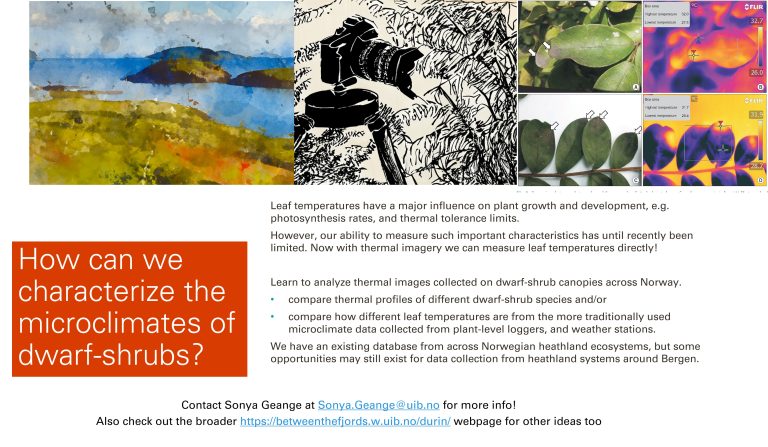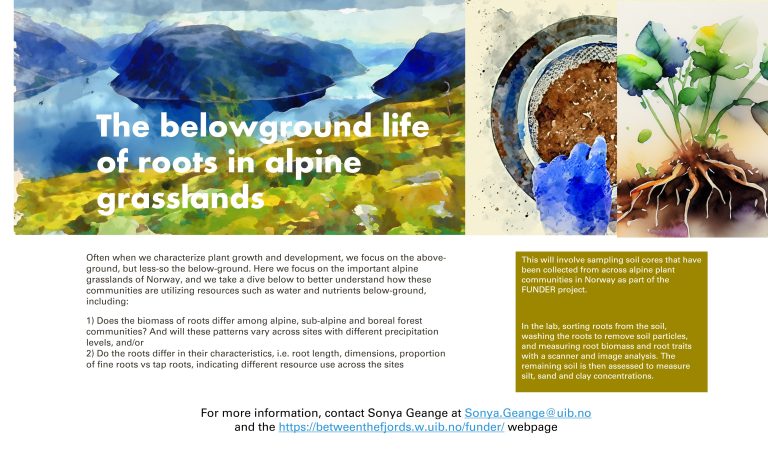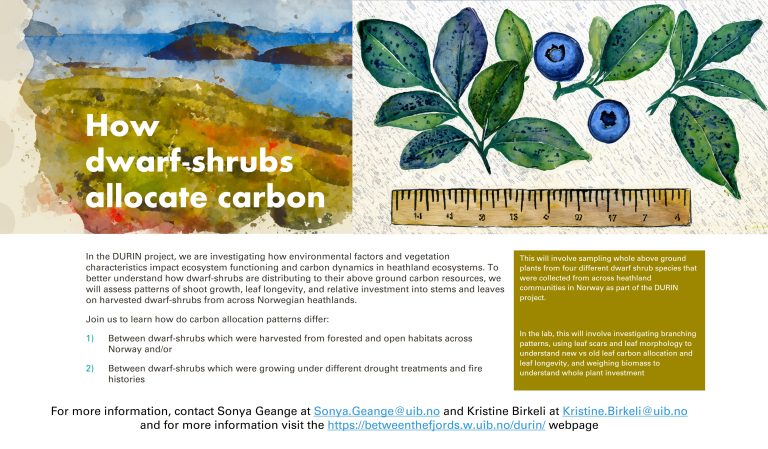Are alpine flowers visited more during the day, or during the night? Does the importance of nocturnal pollinators differ with elevation? How do alpine pollinators respond to warming treatments? And is it possible that some pollinators “bully” others away from flowers while foraging? These are all questions that insect surveillance cameras help to address. We READ MORE
Category: BIO299
Soil carbon stocks
Carbon storage is an important ecosystem service, yet we know very little about how much our ecosystems store. Semi-natural systems are especially understudied. First results show that these ecosystems might be some of the most carbon rich! Question: How much soil carbon is stored in western Norwegian semi-natural ecosystems, specifically coastal heathlands and grasslands? For READ MORE
How can we characterize the microclimates of dwarf-shrubs? (Durin)
Leaf temperatures have a major influence on plant growth and development, e.g. photosynthesis rates, and thermal tolerance limits. However, our ability to measure such important characteristics has until recently been limited. Now with thermal imagery we can measure leaf temperatures directly! Learn to analyze thermal images collected on dwarf-shrub canopies across Norway. compare thermal profiles READ MORE
The belowground life of roots in alpine grasslands (Funder)
Often when we characterize plant growth and development, we focus on the above-ground, but less-so the below-ground. Here we focus on the important alpine grasslands of Norway, and we take a dive below to better understand how these communities are utilizing resources such as water and nutrients below-ground, including: 1) Does the biomass of roots READ MORE
How dwarf-shrubs allocate carbon (Durin)
In the DURIN project, we are investigating how environmental factors and vegetation characteristics impact ecosystem functioning and carbon dynamics in heathland ecosystems. To better understand how dwarf-shrubs are distributing to their above ground carbon resources, we will assess patterns of shoot growth, leaf longevity, and relative investment into stems and leaves on harvested dwarf-shrubs from READ MORE





